Flight Report: A Tour over Paris in the Airbus H160, the World’s Most Advanced Civil Helicopter
«Can I call you? I have a possibility of a flight in the H160.» It all began with a WhatsApp message the previous evening, on June 21, 2023. The third day of Trade at the Paris Air Show was winding down, but as we moved from one place to another within Le Bourget, I received that text and quickly coordinated.
The anxiety and excitement were growing, making it difficult to sleep. So much so that I could hear it starting to rain around two in the morning. By the time I got up, it was pouring. As we walked in the downpour to the bus stop that would take us to the fair, I wondered if this unique opportunity would be thwarted.
We arrived at the Media Center soaked. A quick change of shirt, breakfast, and the workday began. A Thursday that didn’t have the frantic pace of the previous days but left moments for more important things.
I sat down to talk with Alberto Robles, head of Airbus Helicopters for Latin America, and at one point he told me, «it’s improving, they’re going to fly». Soon after, the first demonstration flights began, and then, around 3 in the afternoon, it was our turn.
In an office of the Airbus Chalet, the test pilot Olivier Gensse gave us, in addition to the safety briefing, a talk in which he reviewed the milestones of the H160 since its conception. And the helicopter’s first marvel reveals itself long before we even approach it.
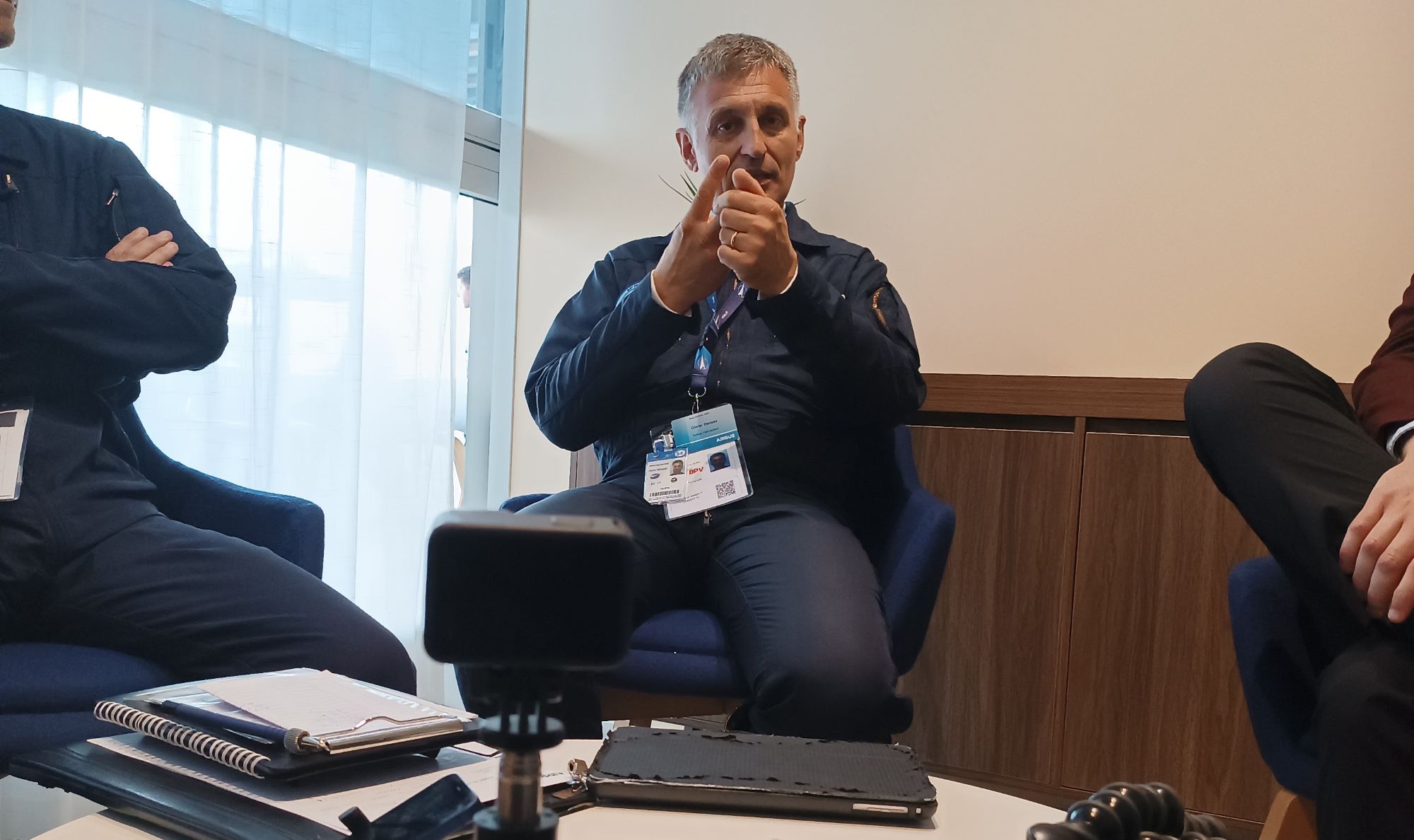
Automation: An Ally, a Complement
It’s a pleasure to listen to Gensse talk about how conceptually the H160 is a helicopter that anticipates a growing discussion. With technological advancements, the incorporation of navigation and control systems has increased exponentially in the cockpits. But in this movement, where does the human factor lie? What is the crew’s tolerance for managing systems in a cockpit that seems to be becoming more autonomous?
Gensse makes it clear: the systems are safety safeguards that allow a pilot to focus on what’s important. They don’t replace the human; they complement it. The Helionix suite generates and displays an impressive amount of flight parameters and aircraft condition, but the magic lies in evaluating what part of that information is important to the pilot at each phase of flight, and presenting it in the most efficient way so that the workload does not increase.
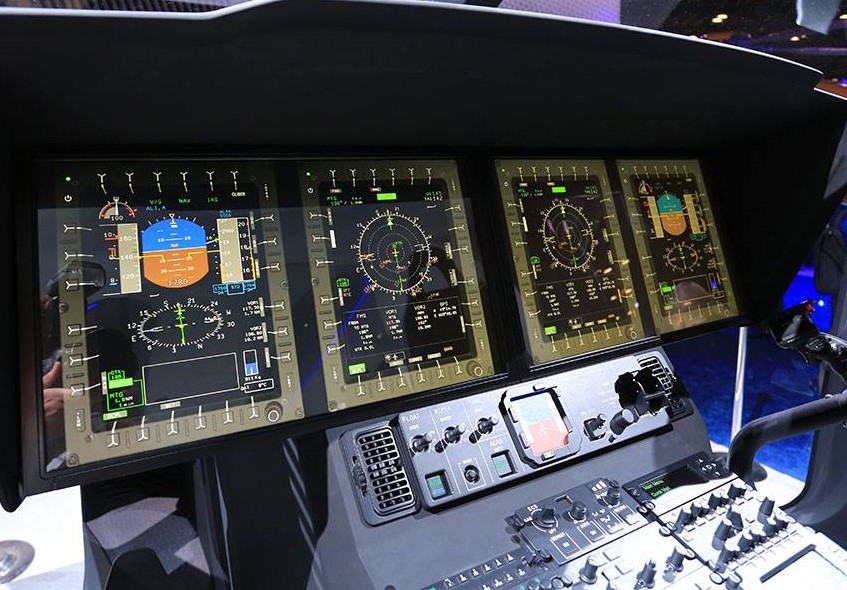
The intelligence lies in how the system manages the data. And the human, in turn, manages the system. The autopilot will intervene when it detects a risk, but the crew will be the one to determine the degree of intervention. My training in IT leaves me fascinated in an office chair. Gensse’s face tells me I haven’t seen anything yet.
Boarding the Airbus H160
After the briefing, we walked to the airport terminal of the show. Document control, security check, and from there, we went to the cars that took us to the heliport, away from the chalet area and the terminal itself.

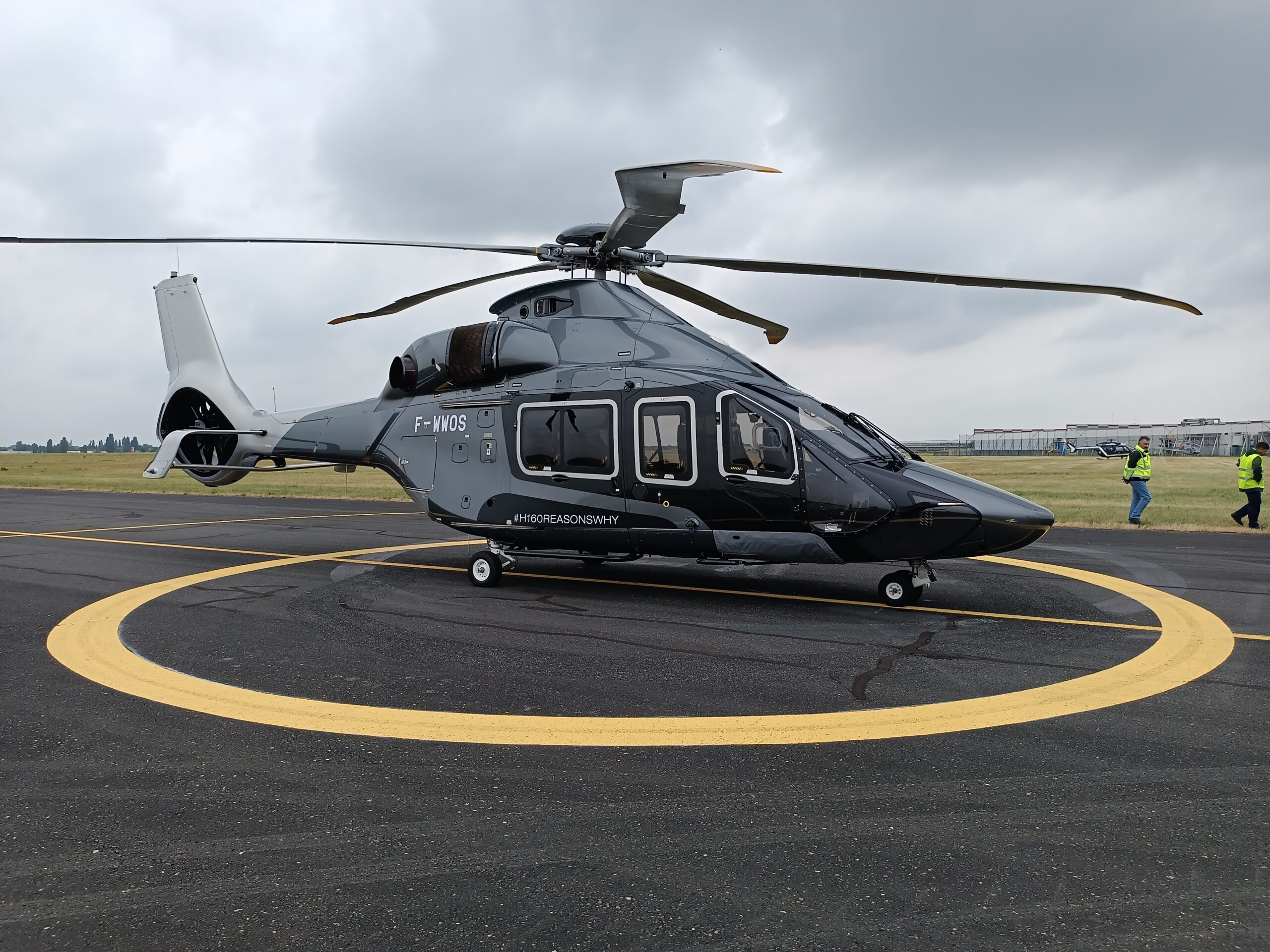
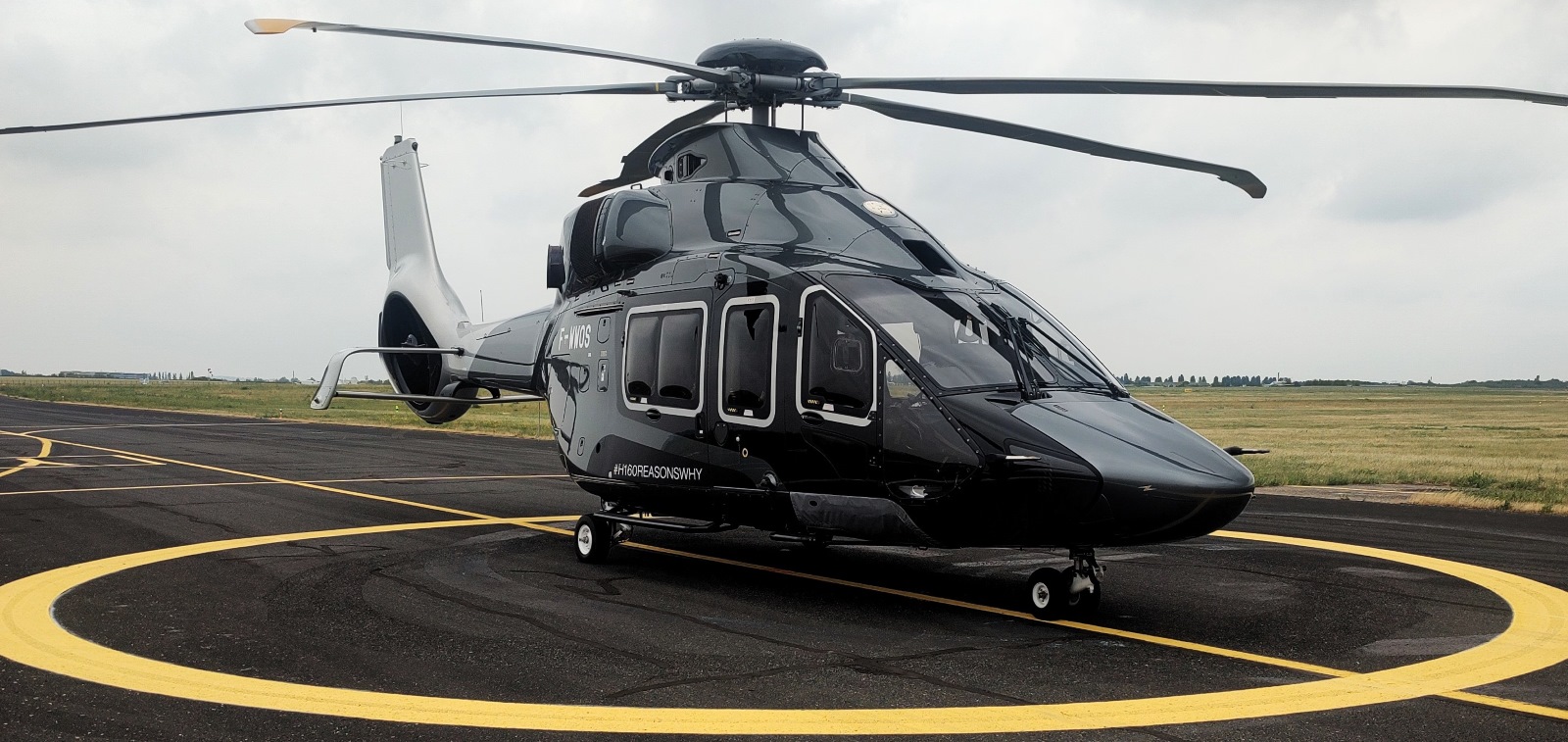
After a while of walking, there was the F-WWOS. We explored it before engine start, and although it’s hard to be objective because, let’s face it, I like anything that flies, the H160 is simply beautiful. The Fenestron (fairing that covers the tail rotor) adds additional elegance.

We boarded, and to the technological marvel that still hasn’t moved, we add the comfort details: a comfortable and firm seat, with secure fastenings. A short time later, the doors close, and Gensse starts the helicopter.
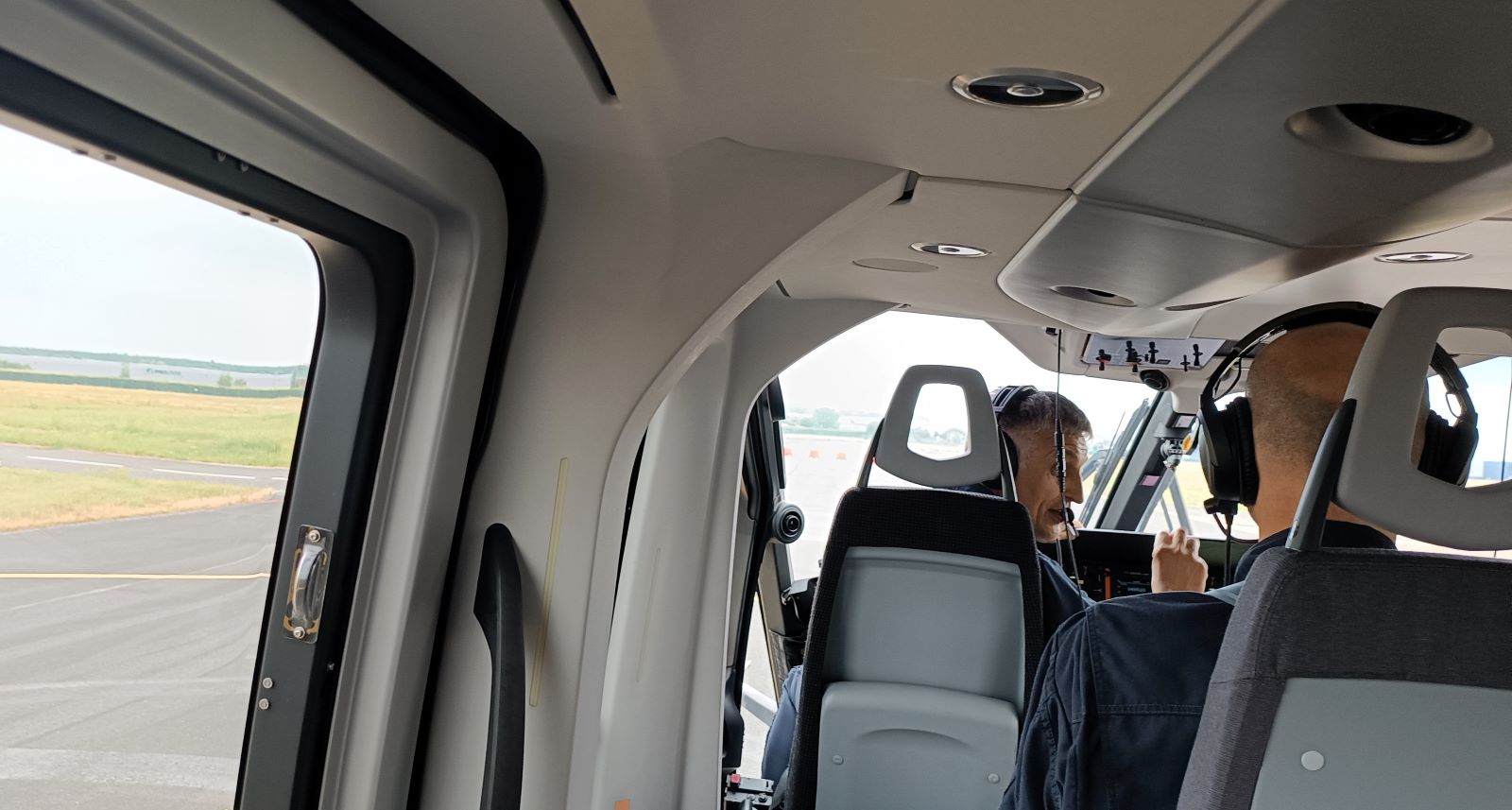
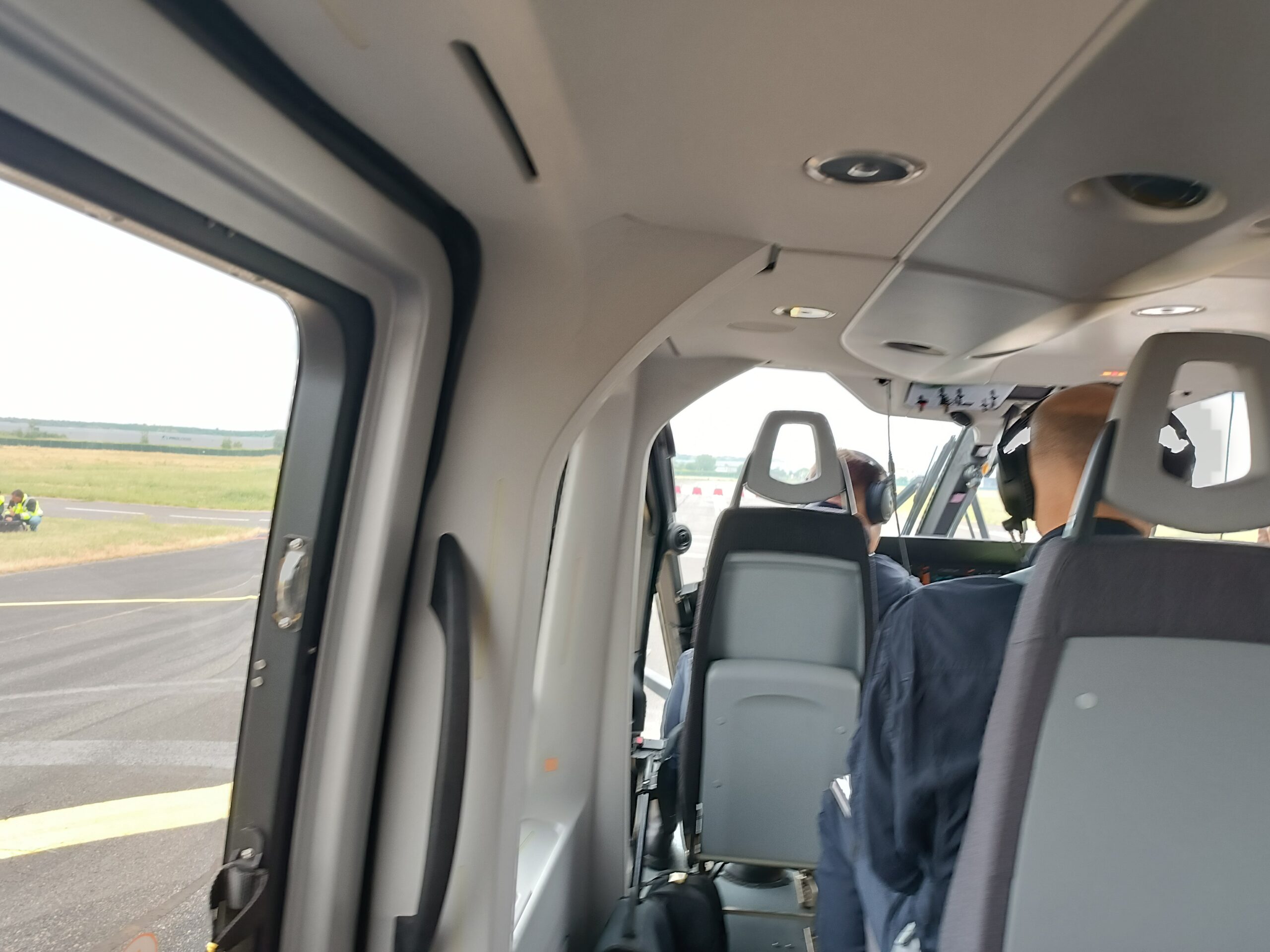
Before taking off, we begin to enjoy the extremely low noise level. All with headsets on, we will hear two voices of command during the flight: the pilot’s and Helionix’s, which will appear a couple of times to demonstrate how important it is. But let’s take off.
The Flight
The helicopter gains some altitude and at an unusual speed, moves straight backward. The shoulders lift off the seat, and not because I wanted to. Gensse cuts the motion by releasing the lever, and the helicopter stabilizes with majestic elegance. It will be the first of several movements that will make it clear that the dance piece the H160 will perform during its demo flight is pure art.
The pilot prepares us for something he had mentioned in the briefing: one of the biggest risks of helicopter operation is the VRS, or Vortex-Ring State, a phase of descending flight characterized by a non-uniform and discontinuous airflow through the rotor blades.
In other words, the helicopter destabilizes due to turbulence induced by the air displacement it generates itself. An extremely dangerous situation, and one that has caused accidents. The crew had said that we were going to test the Vortex Pre-Alerting system, and off we went: approaching the floor, Gensse puts the H160 into its own downwash.
Suddenly, Helionix speaks to us: three alarm sounds, an «alert, alert» and the helicopter climbs and moves forward. The pilot turns around and smiles: from my seat, I raise my eyebrows showing him how amazed I am by the H160’s response mixed with a little bit of anxiety that fortunately dissipated quickly.
We continue dancing: we make a 360° turn at a tight angle that allows me to see how the ground fills my window. A small sprint at 150 knots, a tour of Paris: far away, I see the Eiffel Tower. Due to travel constraints, I couldn’t visit it, but from what I saw from up there, I was more than satisfied.
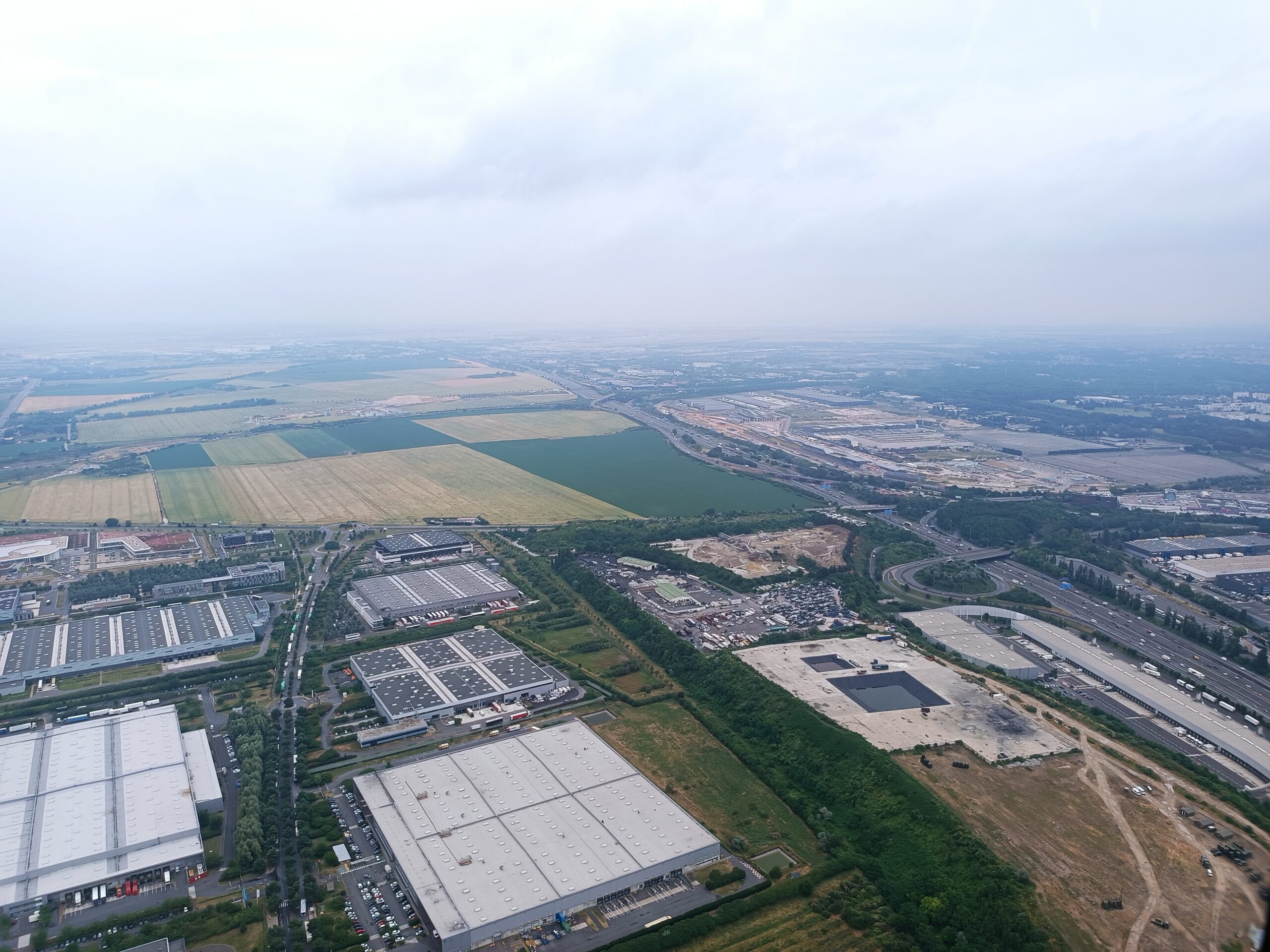
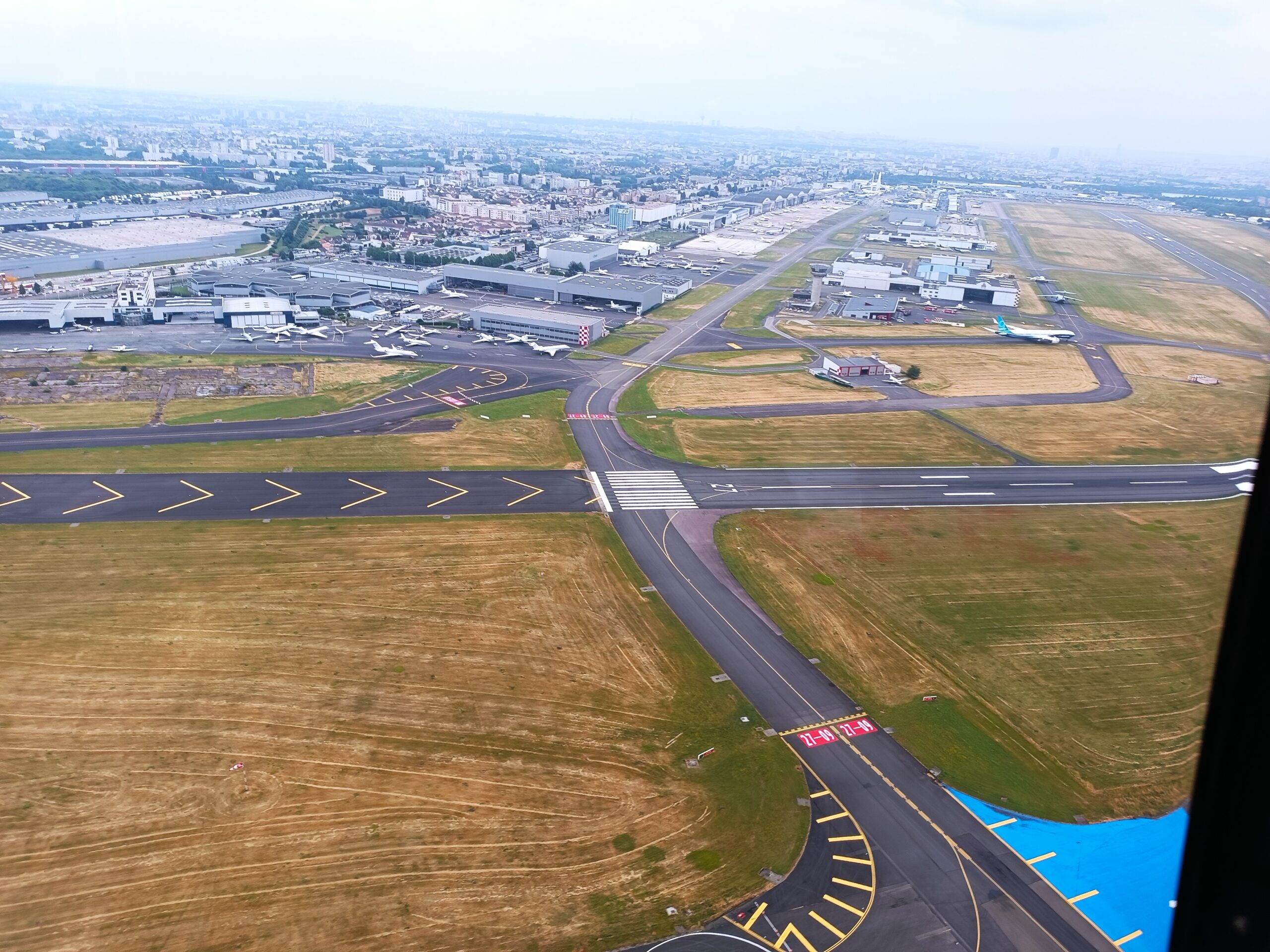
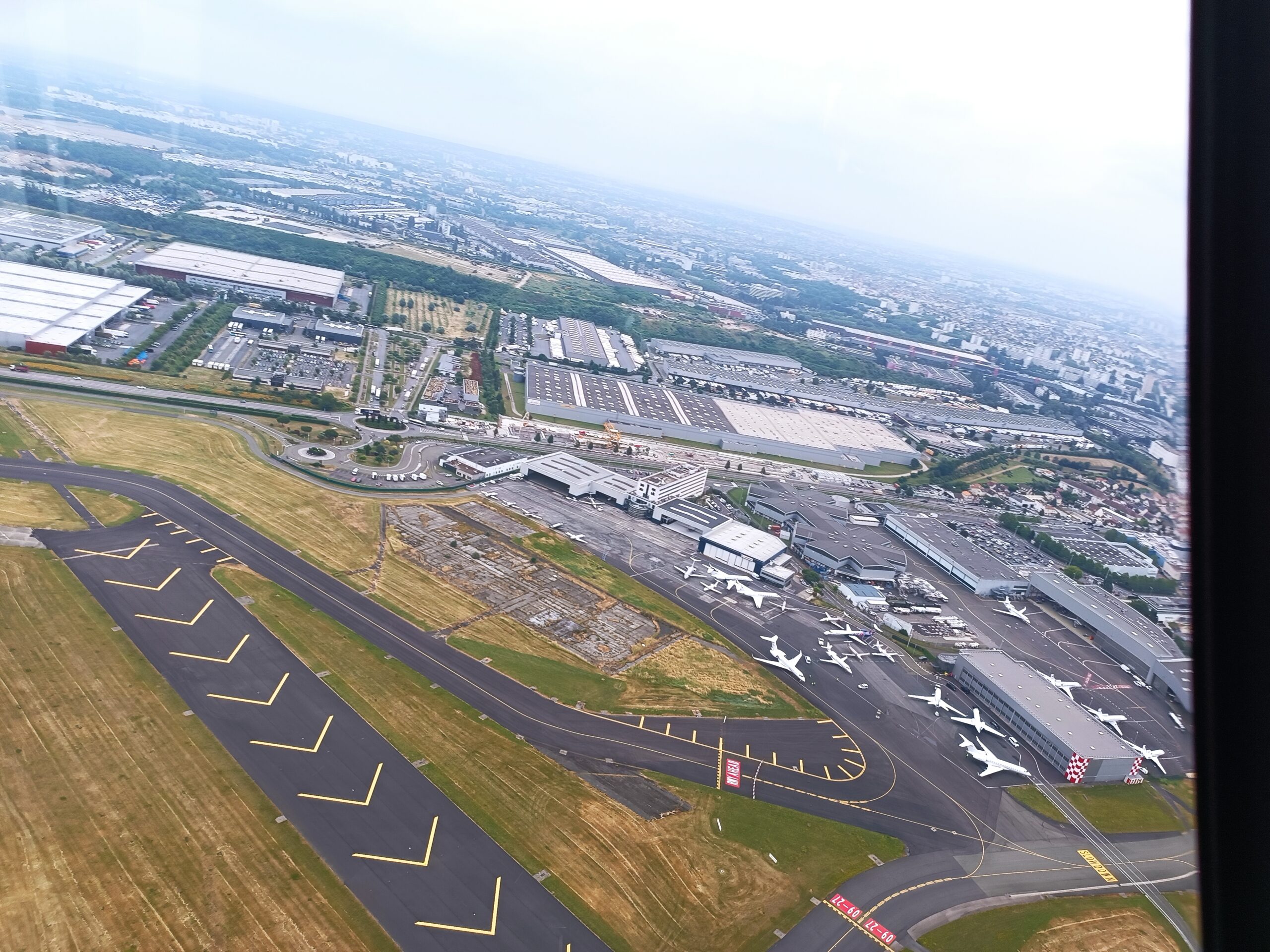
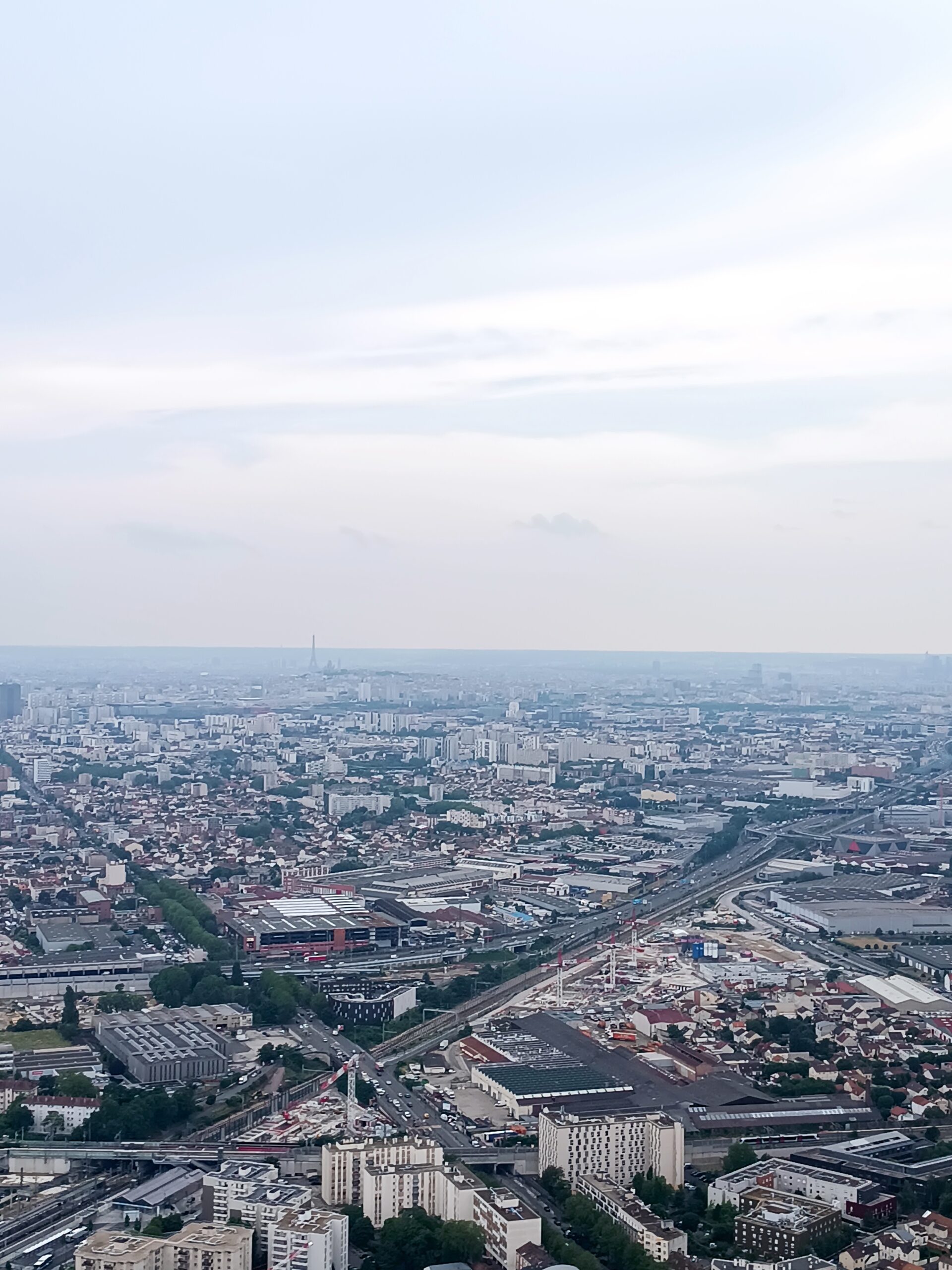
A bit more sightseeing and we return to Le Bourget. We prepare to land and shortly after, we are on the ground with fabulous smoothness. We taxi to the platform and stop beside the Boeing 737-10.

The flight is over, and nothing can take the smile off my face from having had this experience. I get off and give two pats to the helicopter, as if thanking the noble steed for bringing us back home. I walk towards the terminal exit and turn back to look at it. Now, besides being beautiful, I can affirm that it is undoubtedly the most advanced civil helicopter in the world.
Years ahead of the generations we saw as children and admired, the H160 and its technology will be the benchmark against which the rest will be measured. Because it’s not about adding systems to an old paradigm. The Airbus H160 is, conceptually, the helicopter that defines a new paradigm of operation and safety.

/https://aviacionlinecdn.eleco.com.ar/media/2023/08/IMG_20230622_1555191712.jpg)
Para comentar, debés estar registradoPor favor, iniciá sesión